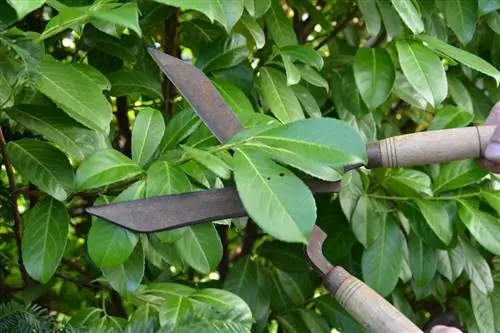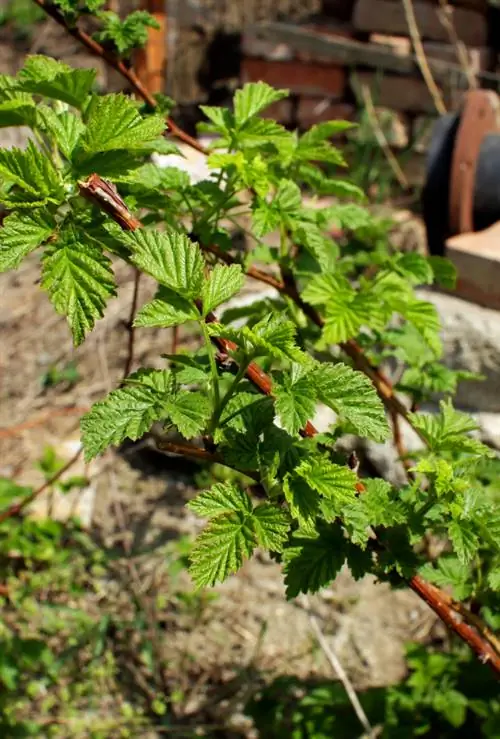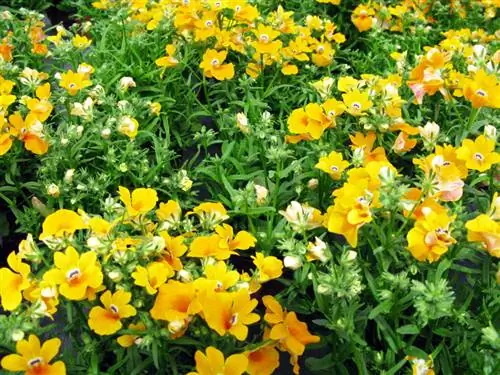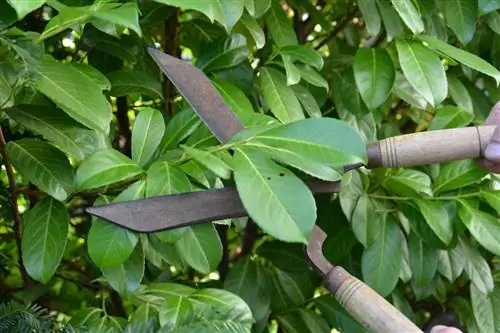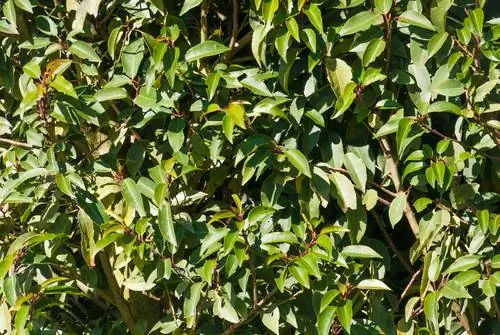- Author admin [email protected].
- Public 2023-12-16 16:46.
- Last modified 2025-01-23 11:22.
Cherry laurel, actually laurel cherry, was considered a robust, evergreen bush. But in recent years, cherry laurel has been affected by mildew in Germany. The fungus was probably introduced to Germany years ago. To contain it, the first thing you should do is prune.
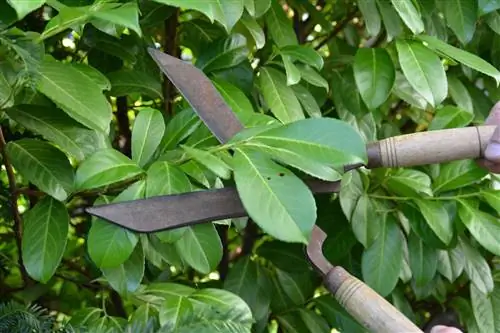
How do I prune cherry laurel if it is affected by mildew?
If you are infected with powdery mildew, you mustcut back all affected shoots significantly. It is best if you shorten the new growth to at least the second row of old leaves. To contain the fungus, do this immediately after recognizing the disease.
How do I recognize powdery mildew on cherry laurel?
On cherry laurel, powdery mildew is not so easy to recognize because thefungus is hidden on the underside of the leaf. White powdery spots first appeared there, which then quickly turned into a light mushroom lawn. Due to the spots on the underside of the leaves, downy mildew is often suspected, which is rare on cherry laurel. Powdery mildew usually only affects the young leaves. These cannot develop properly, show deformations and then die.
What do I have to consider when cutting cherry laurel?
You shouldpruning the cherry laurel manuallybecause an electric hedge trimmer (€88.00 at Amazon) will shred the large, fleshy leaves. Do not remove the clippings in the compost. Watch for leaves that fall during cutting and discard these as well. After cutting, treat the plant with home remedies for mildew.
Tip
Alternatives to cherry laurel
The cherry laurel has long been considered a robust and indestructible plant. A powdery mildew infestation would be a good reason to banish the invasive neophyte from your garden. Alternatives such as yew or holly are native, evergreen and very resistant.

